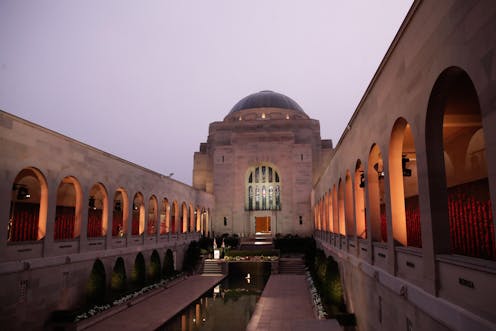Henry Reynolds on the war memorial's surprising change of direction
- Written by Henry Reynolds, Honorary Research Professor, Aboriginal Studies Global Cultures & Languages, University of Tasmania

It was a sudden and unexpected announcement. Late last week, the chairman of the Australian War Memorial, Brendan Nelson, declared the governing council had decided to develop a
much broader, a much deeper depiction and presentation of the violence committed against Indigenous people, initially by British, then by pastoralists, then by police, and then by Aboriginal militia.
The statement was made in the presence of the Minister for Veterans’ Affairs Matt Keogh who has administrative responsibility for the memorial. Keogh observed that the current $550 million expansion of the institution would allow for a greater recognition of the frontier wars. He added
the recognition and reflection on frontier conflict is a responsibility for all our cultural institutions, not just here at the war memorial.
Minister for Indigenous Australians Linda Burney remarked that her government was committed to a truth telling process about Australian colonial history “and a failure to see that reflected in this key institution would be jarringly out of step with this new phase of national reckoning”.
The memorial’s resistance to acknowledging the frontier wars that occurred here over 140 years had seemed implacable.
Reference was always made to official regulations confining its attention to Australian-raised forces fighting overseas. Suggestions for minor amendments to the relevant act were brushed aside, leaving the inescapable impression that the memorial’s board was simply not interested in the untidy, irregular warfare witnessed all over the continent.
The constant riposte to criticism was that while frontier conflict was real enough it should be commemorated in the National Museum.
A board on notice
Some scepticism has followed the sudden conversion. Long-term critics of the memorial wonder if it is anything more than window dressing or whether the present administration has the required knowledge and skills to respond appropriately to such a significant national task.
But a public commitment made with strong official approval cannot easily be reversed. And it is not a mission outside observers will lose interest in. The whole board (which includes ex-PM Tony Abbott) must know they are now on notice. And the memorial is probably the only national institution that has the resources at the moment and, likely, in the near future, to get the project underway.
The times are propitious as well. There is now widespread acceptance of the reality of frontier wars far more so than during the “history wars” of 20 years ago.
There are few contemporary political leaders who would share John Howard’s personal hostility to the “black armband view” of history. A survey conducted by Reconciliation Australia found 64% of their sample accepted the reality of the frontier wars, 6% didn’t while 30% were unsure.
A new generation of historical research has provided powerful confirmation of the extent and duration of the “killing times” particularly during the conquest of north Australia in the second half of the 19th century. The work of Lyndall Ryan and her team at the University of Newcastle has mapped massacre sites all over the continent.
Read more: In The Australian Wars, Rachel Perkins dispenses with the myth Aboriginal people didn't fight back
More than 60,000 Aboriginal deaths?
Extensive new research in Queensland, concentrating on the Native Mounted Police, has raised the possibility the Aboriginal death toll may have been well over 60,000. This would push casualties in the frontier wars to a figure rivalling the total loss of Australian lives in the first world war.
The most innovative development in the relevant scholarship is to focus on Aboriginal resistance in its many forms, not to concentrate only on their fate as victims.





